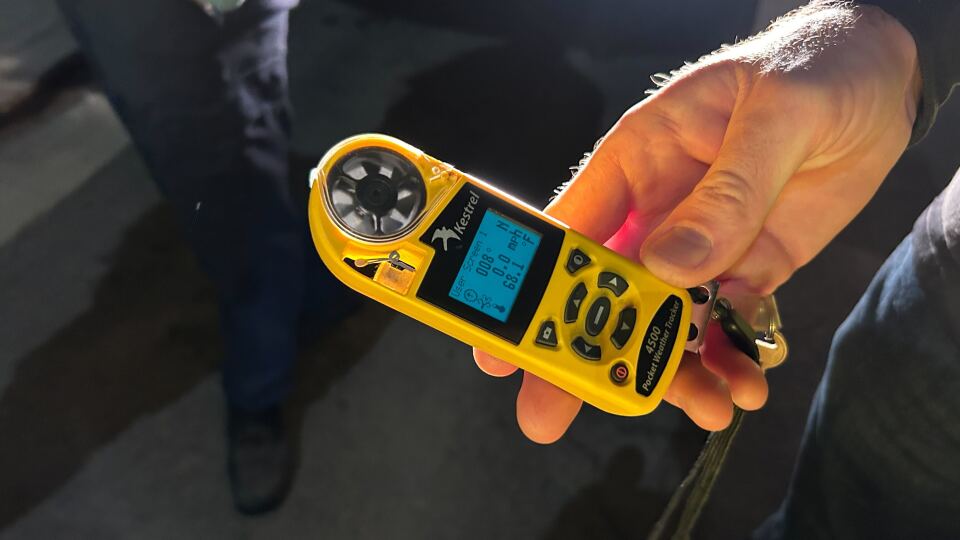Truth matters. Community matters. Your support makes both possible. LAist is one of the few places where news remains independent and free from political and corporate influence. Stand up for truth and for LAist. Make your tax-deductible donation now.
More local dengue is popping up in LA County. Here’s a look at the treatments being done to curb it

The Los Angeles County Department of Public Health is reporting two more cases of locally-acquired dengue this week, bringing our total in the county to eight.
The new cases of the mosquito-borne disease were found in Baldwin Park, bringing the total number in that area to five. Officials only discovered the first case of locally-acquired dengue last month. And until last year, the state never had a local case, making this small outbreak a concern.
To try and halt further spread of dengue — which can cause high fever, vomiting, headaches and other symptoms — the San Gabriel Valley Vector Control District recently sprayed insecticide in El Monte, Baldwin Park and West Covina neighborhoods. LAist rode along on a recent treatment to understand what the process is like.
How crews set up to spray
I met up with a crew from the San Gabriel Valley Vector Control District. On this night, we drove around a neighborhood in El Monte to spray insecticides after a locally-acquired case was found there.
The local catch means there is at least one Aedes mosquito flying around infected with dengue. And it’s likely there are multiple that have the disease given how mosquitoes populate.
At the district’s headquarters in West Covina, the crew prepared a fresh batch of larvicide to try and kill the pesky biters. Stephen Gallegos, a vector control specialist, walked me through the process.
“So we’re going to start mixing pretty soon and get the guys rallied up,” Gallegos said. “It’s going to be a mix of VectoBac WDG, also with water.”

The WDG is short for water-dispersible granules. Gallegos said it doesn’t dissolve fully in the water, so they have to stop it from settling in the container. They use a high-powered agitator to blend the solution, which runs at (a very loud) 2,600 RPM.
Gallegos and his team used this solution with the goal of trying to hit the infected Aedes mosquitoes.
Dengue can cause symptoms like fevers, headaches, pain behind the eyes, joint and muscle pain, rash, and even mild bleeding. About 1 in 20 cases develop serious disease symptoms. While the risk to the public is still considered low, the recent crop of San Gabriel Valley cases has officials concerned.
That’s where the insecticides come in.
This mix is one of two they use to target mosquitoes at different life stages. They’re applied using a truck-mounted machine that sprays out very small droplets of the insecticide.
Gallegos was handed bags of what looked like fine dirt. He poured it into a big spout next to their truck, and it filtered out slowly — almost like an hourglass. The powder was then transported through a hose where it stayed on the truck in the water tank.
Then, it was off to El Monte.
Beginning the spray
Anthony Bishop is a vector control specialist who helped lead the crew. At our neighborhood starting point, he held up a small device that told him the direction of the wind, speed, and temperature.
“We need at least one mile an hour of wind for our products to get it to carry,” Bishop said.

Sometimes, they do multiple checks during the treatment, but that first reading gave them a greenlight to begin spraying the neighborhood.
Speed is the name of the game here. Their trucks get equipped with radar equipment that monitors their speed, which then adjusts the spray’s flow rate up and down.
For the larvicide, they had to drive about 10 mph for it to spray properly. The adulticide is even slower at 6 mph.
“That’s the one that takes a little bit longer and a bit gruesome to do,” Bishop said.
They followed routes that took them up and down residential streets multiple times. Anais Medina Diaz, a spokesperson for the district, said guidance states that Aedes mosquitoes travel 150 meters.
“We use sort of that kind of flight range to determine where the immediate response is needed,” she said.
However, in this case, the teams are spraying more than that. Part of that is because the machines require a larger amount of insecticide to work, but it also helps the district establish a larger radius of protection. On this night, they covered about 400 acres — driving through alleys, neighborhood streets and a couple commercial centers.
The safety measures
As I followed behind in my car, I had to wear personal protective equipment (PPE) anytime I wanted to step out and observe the spraying, which went off into the air like those outdoor restaurant misters on a hot day.
The crew had PPE on too because overexposure to pesticides can be harmful.
That’s partly why they apply the spray at night. It’s better for windflow. It’s also safer for dormant, beneficial insects like bees and butterflies. And it’s better for humans because most people are asleep.
Medina Diaz said it’s all about weighing the public health risk against the side effects of pesticides.
“In general, residents don’t have to worry about the pesticide,” she said. “We’re really using a spoonful of product to a football field.”
The adulticide dissipates in the sunlight, she added, and the larvicide is approved for use on organic products.
There is debate on how effective spraying is in preventing disease outbreaks, but studies have shown that it can help. The strategy is also recommended by the CDC and EPA. It’s part of a range of methods vector control districts use to prevent the spread of mosquito-borne diseases, including backpack treatments, mosquito testing and door-to-door education.
Medina Diaz said that if you’ve not yet picked up insect repellent, it’s time to do so. The district recommends one with DEET, picaridin, IR3535, or oil lemon eucalyptus.
“These Aedes mosquitoes are no joke,” she said. “They will bite through your clothing. They will bite through the repellent if it doesn't have enough of the active ingredient.”











